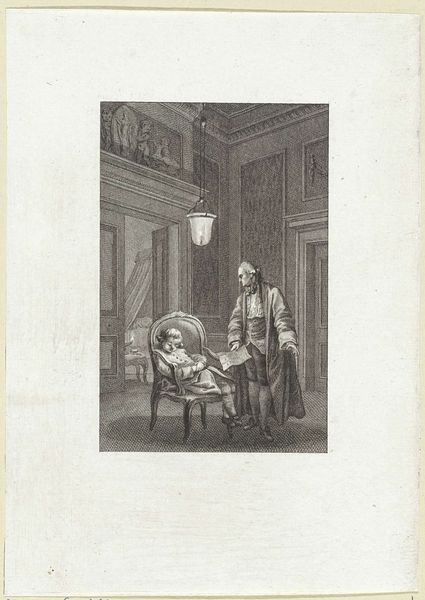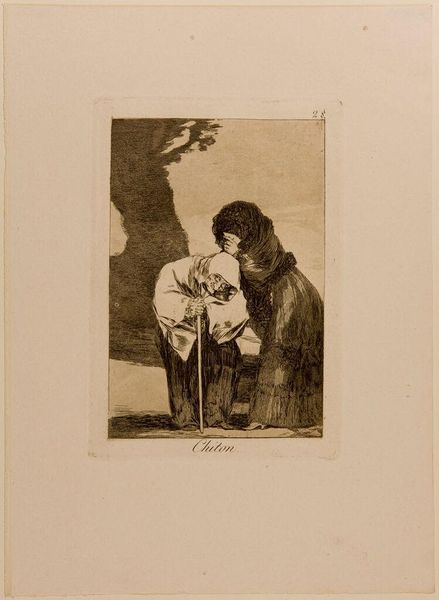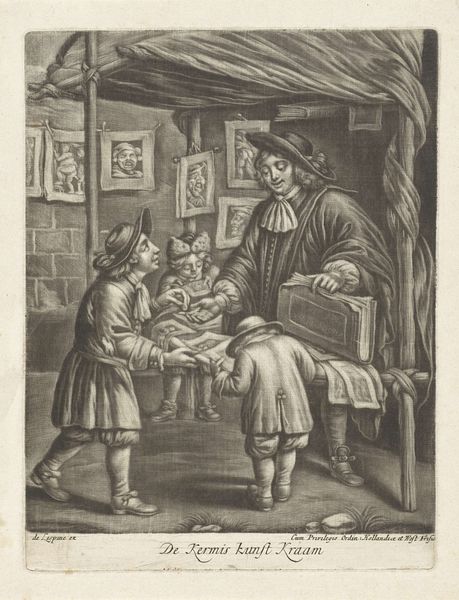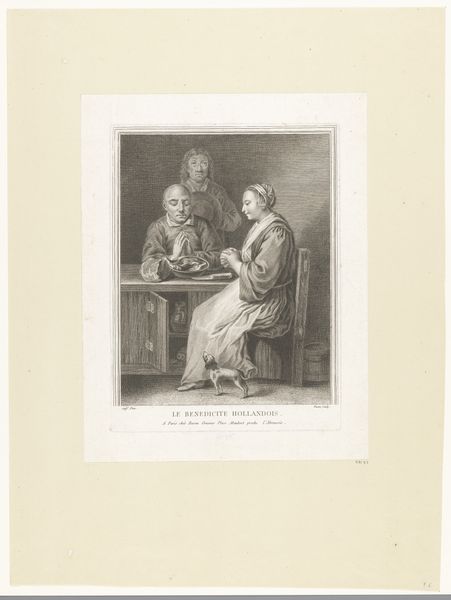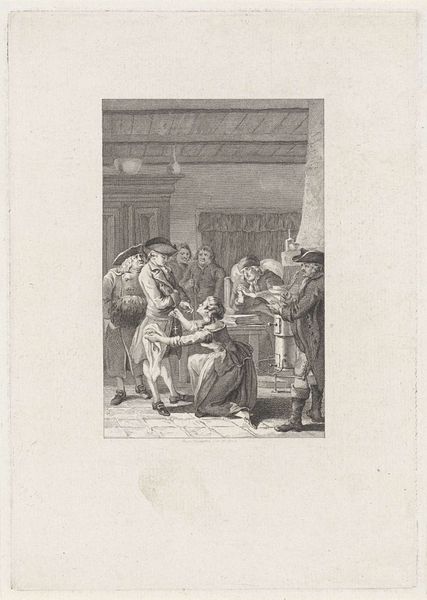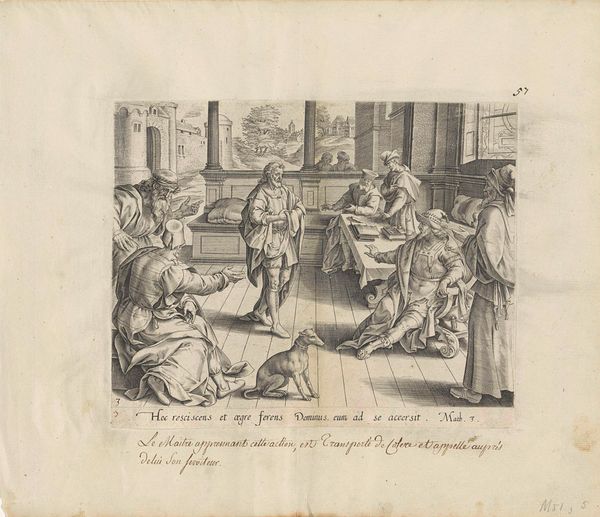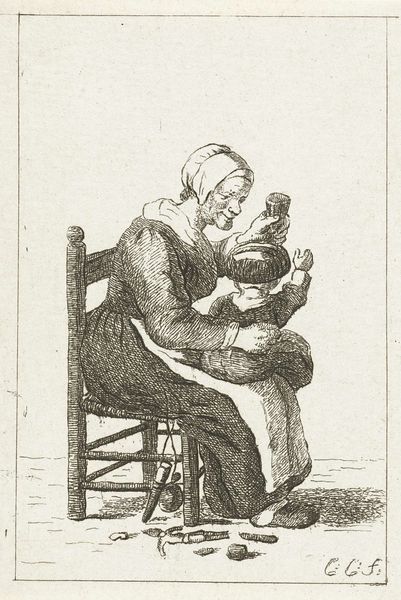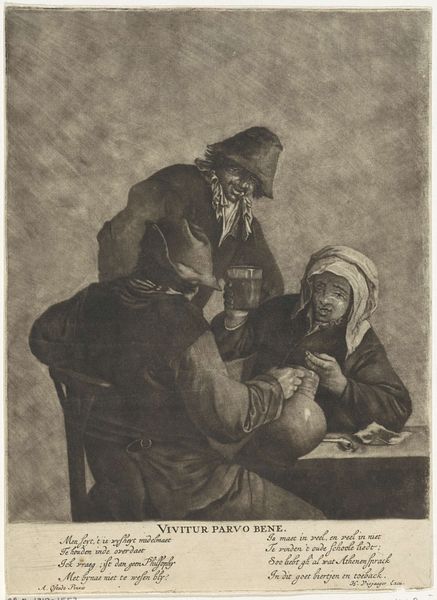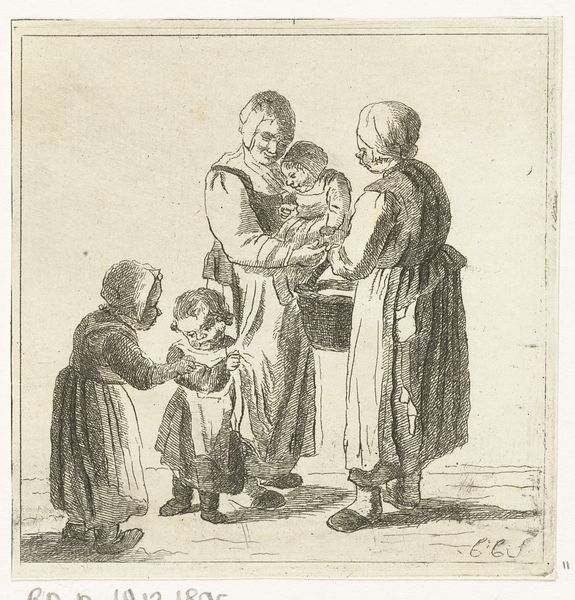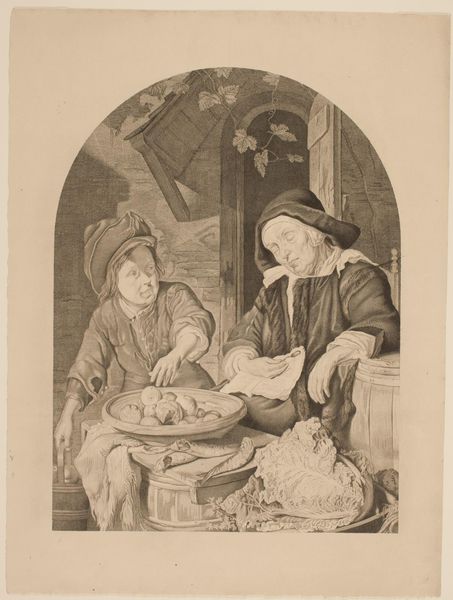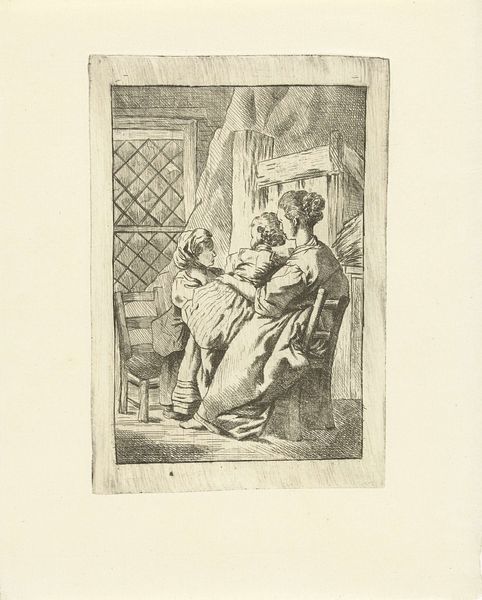
Interieur van een boerderij met twee boeren en een boerin die fluit speelt c. 1645 - 1706
0:00
0:00
print, engraving
#
pencil drawn
#
toned paper
#
light pencil work
#
narrative-art
#
dutch-golden-age
# print
#
pencil sketch
#
old engraving style
#
figuration
#
personal sketchbook
#
pencil drawing
#
sketchbook drawing
#
pencil work
#
genre-painting
#
sketchbook art
#
engraving
Dimensions: height 253 mm, width 193 mm
Copyright: Rijks Museum: Open Domain
This anonymous etching, likely from the early 17th-century Netherlands, depicts three peasants making music in a humble farmhouse interior. The scene offers a window into the everyday lives of the rural working class and their leisure activities. Notice how the image creates meaning through its contrast between the high art of music and the low status of the performers. The inclusion of musical instruments like the flute and cello alongside the rough setting challenges the traditional association of music with aristocratic culture. It’s possible the artwork reflects a changing social landscape, where cultural expression becomes more democratized. This shift may have been influenced by religious changes that called for accessible forms of worship. To understand this print further, we could explore the cultural significance of music in 17th-century Dutch society. Archival research might also reveal the changing social attitudes towards the working class. By investigating the social and cultural context, we can gain a deeper understanding of its role in shaping the artistic landscape of the time.
Comments
No comments
Be the first to comment and join the conversation on the ultimate creative platform.
